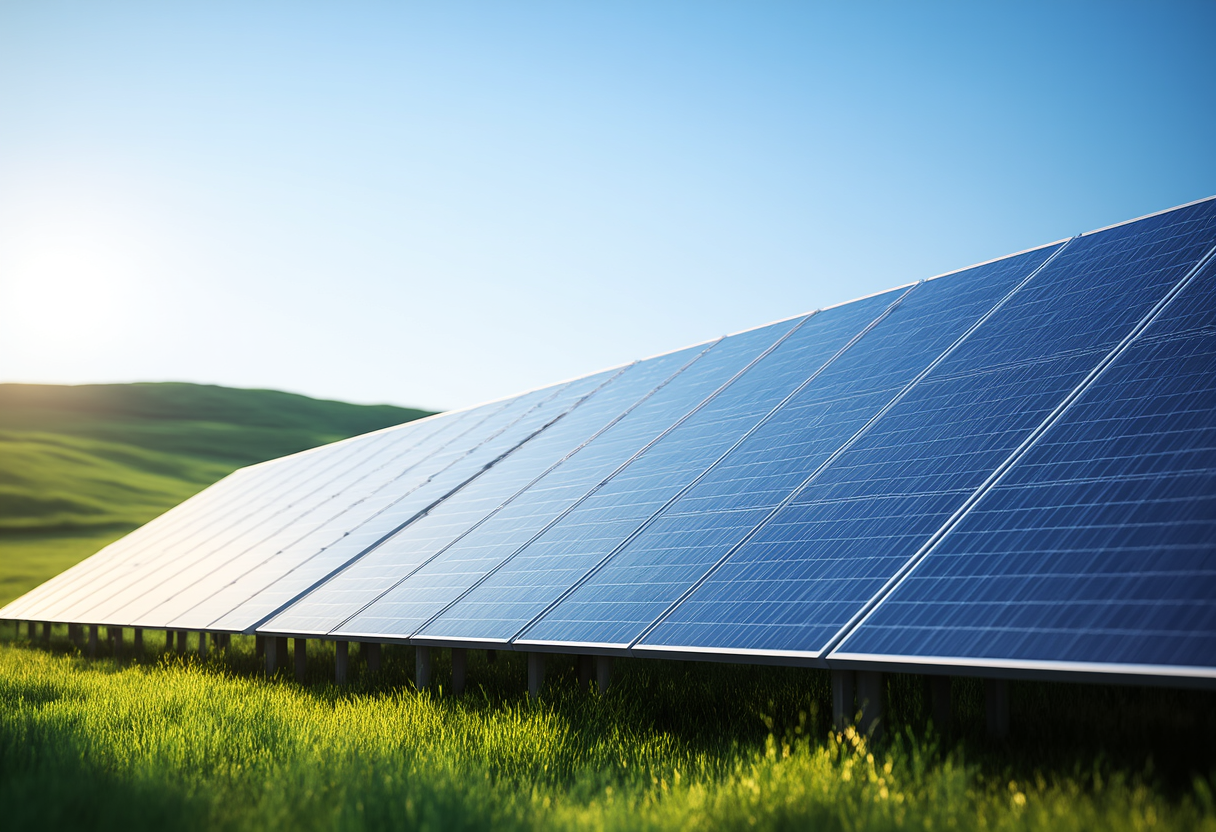Are Polycrystalline Solar Panels Worth It? Unpacking the Pros and Cons
In the quest for sustainable energy, polycrystalline solar panels offer both benefits and drawbacks. This article delves into their efficiency, costs, and real-world applications to help consumers make informed decisions about renewable energy investments.
Unpacking Polycrystalline Solar Panels
Polycrystalline solar panels are a popular choice among consumers seeking to harness solar energy, yet many still question their overall value. Made from silicon crystals, these panels are less expensive to produce than their monocrystalline counterparts, making solar technology more accessible. However, understanding the nuances of polycrystalline solar panels requires examining various factors, including efficiency, material characteristics, and potential environmental impacts. Their blue coloration and visible silicon crystals differentiate them in the market, but is their performance up to par with expectations? As increasing energy demands continue to push the need for renewable sources, polycrystalline solar panels emerge as a viable solution, but consumers must weigh the pros and cons carefully.
Key Advantages of Polycrystalline Solar Panels
Considering the advantages, polycrystalline solar panels stand out primarily due to their affordability. By providing a lower-cost entry into solar energy, they appeal to a broader audience, facilitating the transition to cleaner energy. Additionally, they are generally easy to install and maintain, which reduces long-term upkeep costs. These panels are also known for their reliability, as they perform reasonably well in a variety of weather conditions. Importantly, polycrystalline solar panels exhibit lower temperature sensitivity than some alternatives, ensuring consistent energy production even during high-heat days. The environmental footprint in their manufacturing process is also typically lower, making them a more sustainable choice for many consumers. Such factors cumulatively bolster the appeal of polycrystalline solar panels as a wise investment for both residential and commercial users.
Weighing the Drawbacks of Polycrystalline Solar Panels
On the downside, polycrystalline solar panels do exhibit certain disadvantages that could sway potential buyers. For instance, their efficiency is generally lower compared to monocrystalline panels, particularly in limited space applications. In areas with abundant sunlight where space is at a premium, higher-efficiency panels might be preferable. Additionally, the aesthetics of polycrystalline panels, often described as bulkier and less sleek than other types, may deter design-conscious consumers. Furthermore, the long-term durability of these panels can vary based on manufacturing quality; thus, selecting a reputable brand is crucial. As the renewable energy market evolves, remaining informed about these drawbacks can empower consumers to critically assess the total cost of ownership regarding polycrystalline solar panels.
The Economic Landscape for Polycrystalline Solar Panels
The economic factors surrounding polycrystalline solar panels paint a complex picture. While they are initially less expensive, the longevity and efficiency contribute significantly to the overall cost savings experienced over time. For many users, governments also offer incentives and rebates for solar installations, enhancing financial viability. Thus, the perceived upfront cost may be misleading when considering the total lifespan benefits of polycrystalline solar panels. The upward trend of electricity costs only adds to the allure of installing solar systems now, as consumers can lock in their energy prices and achieve significant savings in the long run. Additionally, as advancements in technology continue to enhance the capabilities of polycrystalline solar panels, their economic favorability is likely to increase, aligning with global priorities on clean energy.
Real-World Experiences with Polycrystalline Solar Panels
In real-world settings, users of polycrystalline solar panels report varying experiences based on their unique circumstances. For many homeowners, solar panels have transformed their energy consumption patterns, allowing them to significantly decrease monthly utility bills. Some commercial operations have also installed these panels to meet sustainability goals while boosting public credibility and improving branding positions. However, feedback regarding installation quality and panel efficacy varies, emphasizing the importance of choosing qualified solar installers. These testimonials underline the role of community and shared knowledge in navigating the complex landscape of solar energy options. Engaging with local solar user groups can provide insight into the practical applications and performance of polycrystalline solar panels, enriching understanding and decision-making.
Conclusion: Are Polycrystalline Solar Panels Worth the Investment?
Ultimately, the decision on whether polycrystalline solar panels are worth the investment hinges on individual circumstances and goals. Their affordability, reliability, and adaptability present compelling arguments for their consideration in the renewable energy market. However, consumers must also acknowledge potential challenges, such as efficiency concerns and aesthetic preferences. Evaluating the various factors, including cost, environmental impact, and long-term savings, will serve potential buyers well as they navigate their options. With solar energy playing a pivotal role in addressing global energy concerns, polycrystalline solar panels can contribute significantly to a sustainable future if adopted mindfully.
